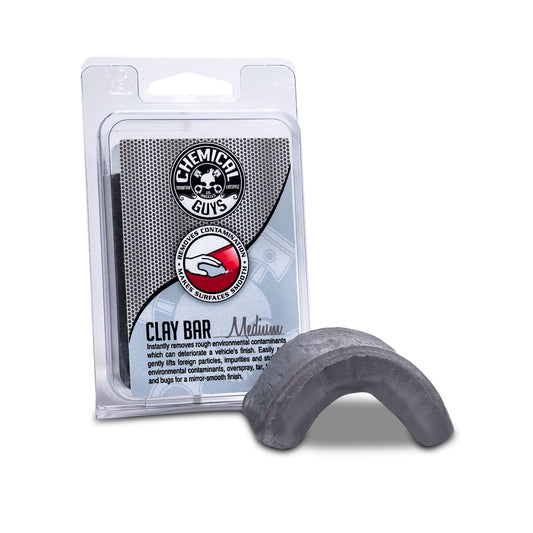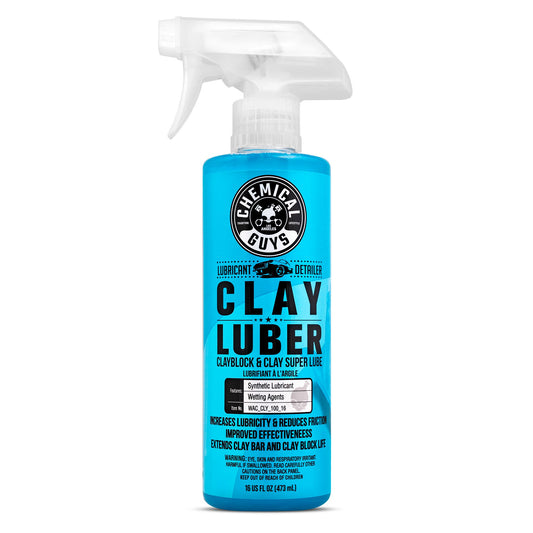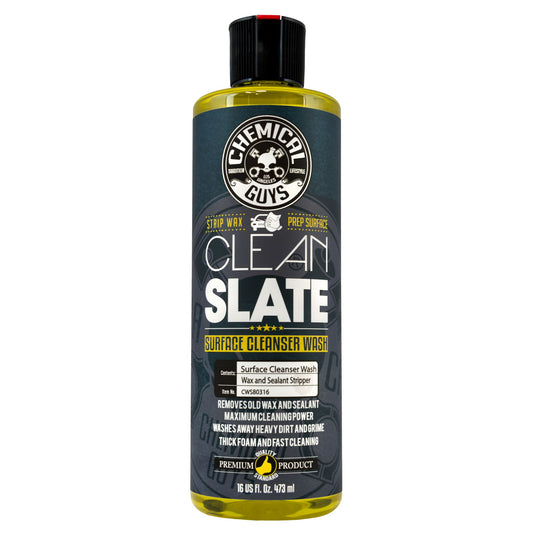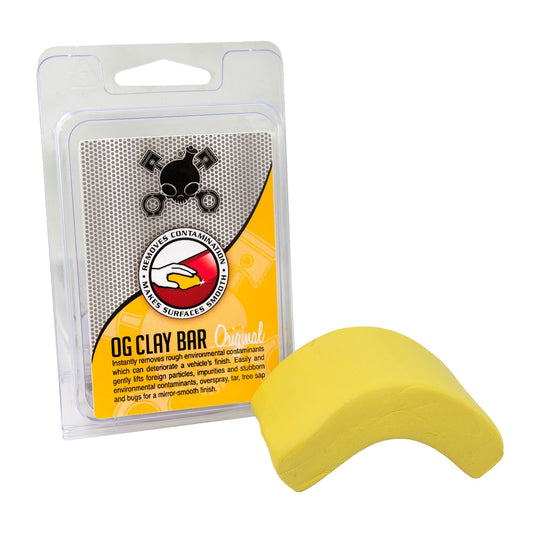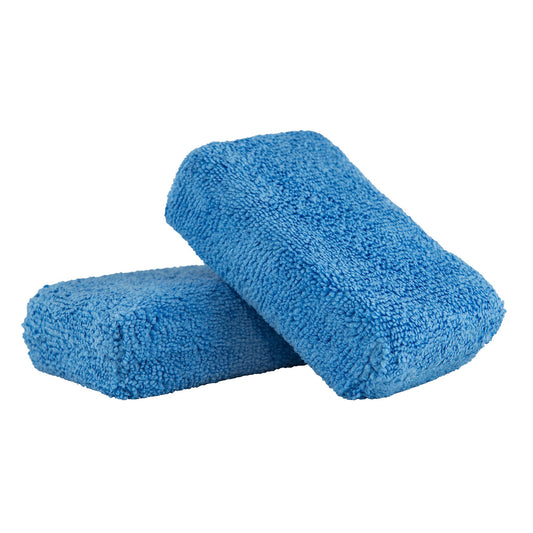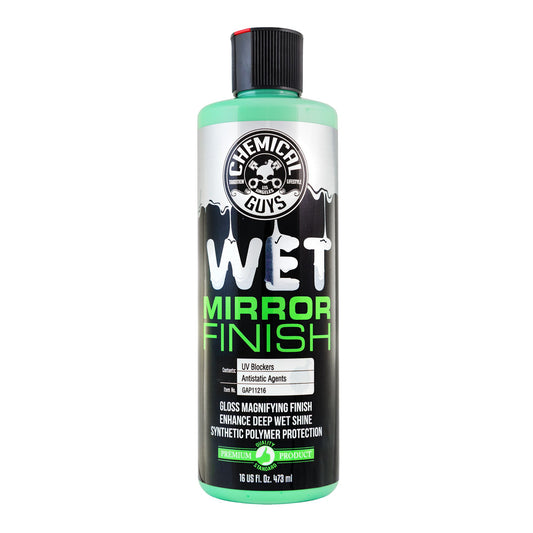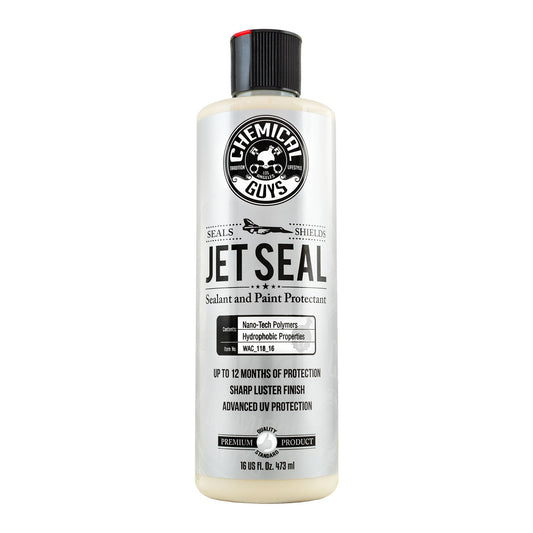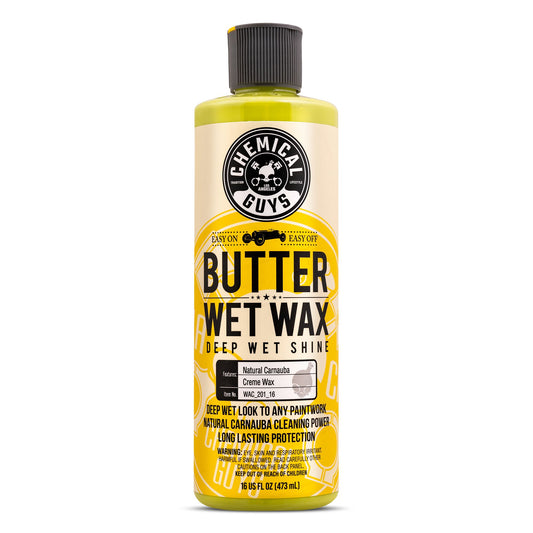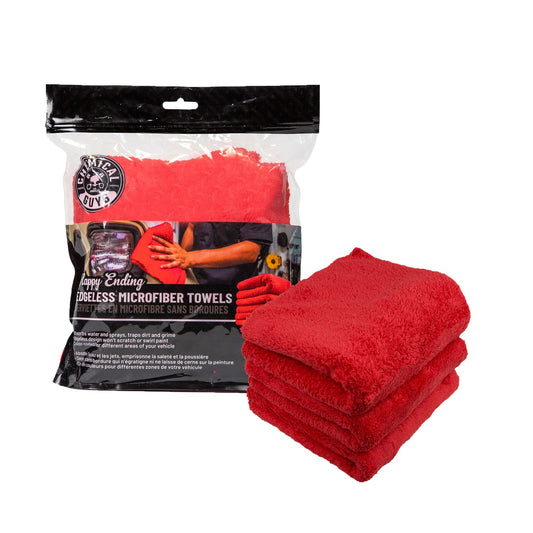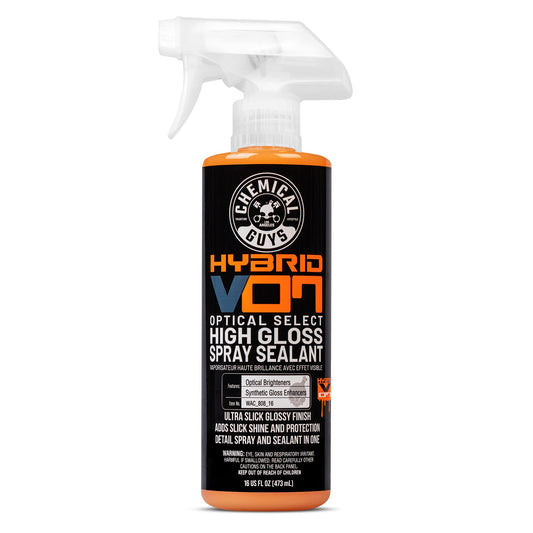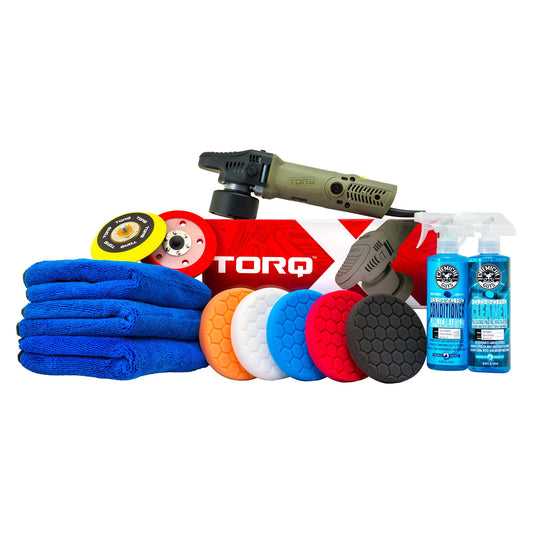The clay bar has long been known as the “Detailer’s Secret” for restoring a smooth-as-glass feel to exterior automotive paintwork. A slick surface is sign of a professional job, and people love it because it makes the car feel and look brand new. Now that the clay bar is available to the public, anyone can use without calling a professional and paying expensive shop rates. But how can you get professional results if you’ve never used a clay bar? Read on to learn why you need it in the first place, the basic clay bar techniques, and how to protect your work so your car feels and looks great for as long as possible after you use the clay bar.
What is the Clay Bar and Why Do You Need It?
The modern detailing clay bar is a synthetic plastic putty that physically pulls embedded dirt out from your car’s paintwork. If your car has ever felt rough and “dirty” even after a full car wash, you need to use the clay bar. The rough feeling on your car’s exterior is pollution, industrial fallout, and environmental contamination stuck in the pores of the paintwork. If you don’t remove this contamination, it can:
- Block fresh wax from sticking to the paintwork, causing wax coats to wear out faster and not look as shiny as they could.
- Cause paint to oxidize, corrode, and fall off the car prematurely.
- Block light from reflecting off the clear coat as it should, giving a dull, muted shine to the finish.
- Get pulled out in your drying towel and physically scratch your finish with every wipe.
Only the clay bar removes this contamination without causing more damage. A clean and smooth surface attracts less dirt and grime, and stays cleaner for longer. Prepare the surface for a longer-lasting and better-looking wax bond with improved gloss and shine with your favorite Chemical Guys Clay Bars!
Light Duty Clay Bar
The Chemical Guys Light Duty Clay Bar is the gentle solution for turning lightly rough and bumpy paintwork smooth as glass. Choose the Light Duty Clay Bar when working on brand new cars, or garage-kept show cars with very light levels of contamination.
OG Clay Bar Light/Medium Duty
The Chemical Guys OG Clay Bar removes embedded contaminants that ruin shine and destroy paintwork over time. Professional detailers use the OG Clay Bar to pull debris out from the paintwork that clogs buffing pads, induces extra scratches, and blocks fresh coats of wax from sticking to the surface. The OG Clay Bar works great on any glossy paint finish, new or old. Restore the smooth feel back to any car, truck, motorcycle, RV, or boat with the Chemical Guys OG Clay Bar.
Medium Duty Clay Bar
The Medium Duty Clay Bar grabs a hold of tougher contamination that is stuck harder to the exterior of your vehicle. Remove tree sap, brake dust, rail dust, paint overspray, pollution, and industrial fallout from any daily driver. If you live in a big city and your car is parked outside more than 12 hours a day, you probably have to use the Gray Medium Duty Clay Bar.
Heavy Duty Clay Bar
The Heavy Duty Clay Bar is for cars that have never been clayed. The Heavy Clay Bar is for extremely rough and sticky paint finishes full of heavy industrial contamination, pollution, tree sap, and brake dust. Only use the Heavy Duty Clay Bar when no other clay bar makes the surface feel smooth as glass. If you need to use the Heavy Duty Clay Bar, chances are the surface has been neglected and needs to be polished to remove swirls, scratches, and wash marring that accompany years of daily driving and parking out in extremely polluted conditions.
When Should You Use The Clay Bar?
The detailer’s rule of thumb is to always decontaminate the surface with a clay bar before putting on a new coat of wax, or polishing any exterior paintwork. Those foreign particles block wax from sticking to the paint, making it last for a shorter time and not shine as bright. Polishing with any rough contaminants grinds them deeper into the paintwork, causing more marring and scratches as they clog and destroy your expensive buffing pads. If you’ve never used a clay bar before, you definitely need to use one now!
What Can You Use The Clay Bar On?
You can use the clay bar on any exterior car part that is shiny or clear. Use the clay bar to decontaminate car parts such as:
- Paintwork
- Glass
- Clear optical plastics (headlight / tail lights)
- Polished metals (stainless steel, aluminum, chrome, etc)
- Wheels
- Carbon fiber
- Exhaust tips
- Clear bras
What Can You NOT Use The Clay Bar On?
There are certain parts you should not use the clay bar on, such as:
- Matte paintwork / vinyl wraps
- Textured plastic trim
- Rubber (door / window seals, tires)
What to Do After Using a Clay Bar
Once you have decontaminated the surface of the vehicle with a clay bar, it should feel smooth as glass. This shows you that the surface is completely clean, and there is nothing between the paintwork and your fingertips. Now you must fill the pores of the paintwork with a wax or sealant to block out pollution, contaminants, water, and harsh UV light that stick to and damage the paintwork over time.
If you want to, this is the time where you can polish the paint to remove swirls and scratches. If not, skip to the final waxing steps.
Spread a thin, even coat of your favorite Chemical Guys natural carnauba wax, durable synthetic sealant, or ultra-durable advanced vehicle protective coating to seal and protect the paint from the environment.
I Dropped My Clay Bar, Can I Keep Using It?
No! Would you chew a piece of gum after dropping it on the floor? No! It’s full of rocks and debris. Don’t rub clay on your paint after dropping it either.
Once you drop a piece of detailing clay, you MUST throw it out! The clay is so sticky that it will pick up any tiny abrasive particles, bits of sand, dirt, and grime from the floor. Now the clay bar is like a piece of sandpaper: rub it on your paint, and you’ll scratch it with all those abrasive particles it just picked up.
So be careful, work slowly, and only use a small piece of the clay bar at any given time. So if you do drop a small piece, you don’t lose the entire clay bar all at once.




